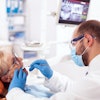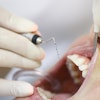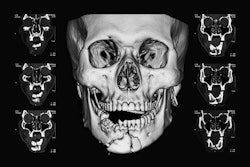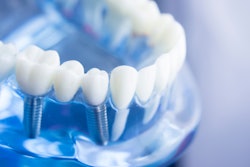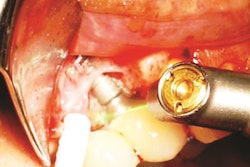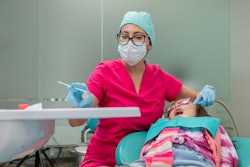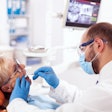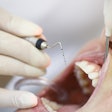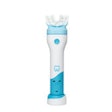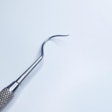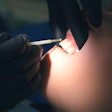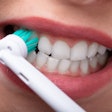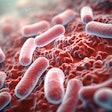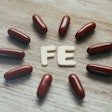Abaloparatide (ABL), a drug used to treat osteoporosis, may be an effective treatment to prevent gum dehiscence, which is when the bone of a tooth erodes below the gumline. The study was recently published in the International Journal of Oral Science.
Furthermore, ABL may encourage alveolar bone growth by activating periosteal bone-forming cells through a pathway controlled by focal adhesion kinase (FAK), the authors wrote.
“We have introduced a promising therapeutic approach for drug-induced in situ alveolar bone augmentation, which may prevent or repair the detrimental periodontal dehiscence, holding significant potential in dentistry,” wrote the authors, led by Ruyi Wang of the West China Hospital of Stomatology (Int J Oral Sci, September 2, 2025, Vol. 17:1, pp. 1-14).
Alveolar bone volume plays a key role in maintaining periodontal health, and inadequate thickness increases the risk of dehiscence. Orthodontic tooth movement can further reduce the surrounding alveolar bone. This study aimed to explore how locally administered ABL affects labial and buccal alveolar bones in rats undergoing orthodontic tooth movement, they wrote.
Male rats were anesthetized and fitted with devices to move teeth either labially (LM) or buccally (BM). In the LM model, rats were divided into control, LM, ABL, and ABL plus LM groups, with daily submucosal ABL injections at the labial vestibule of the mandibular incisors. In the BM model, ABL was injected on the right side and saline on the left side of the buccal vestibule between the maxillary first and second molars. After two weeks, the researchers collected the rats’ maxillae and mandibles for analysis.
Intraoral submucosal ABL injections combined with mechanical force significantly increased alveolar bone thickness, with most new bone forming outside the original compact bone. The ABL + LM group showed labial alveolar bone thickness of 865.40 μm ± 103.28 μm, about 6.9 times greater than the control group and 3.4 times greater than the LM group, wrote.
ABL alone boosted cell proliferation, collagen production, and FAK phosphorylation in the alveolar periosteum, and these effects were further enhanced when combined with mechanical force. Importantly, the pro-osteogenic action of ABL was completely blocked when FAK activity was inhibited.
However, using a selective phosphorylation inhibitor, the researchers found that blocking this site eliminated ABL-induced alveolar bone formation, highlighting the need to investigate other FAK phosphorylation sites for a fuller understanding of the mechanism, the authors added.
“Intraoral submucosal injection of ABL, when combined with sufficient mechanical stimulation, promotes significant alveolar bone thickening via periosteal osteogenesis, which could be mediated by FAK activity,” they wrote.

